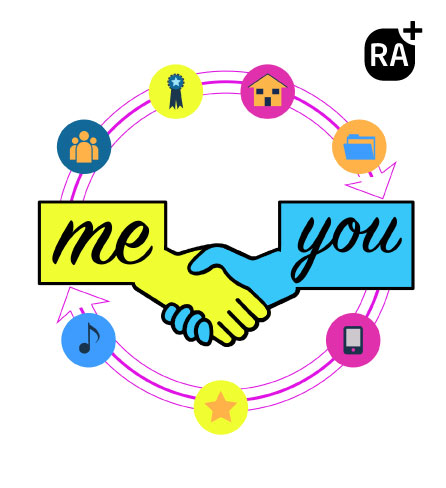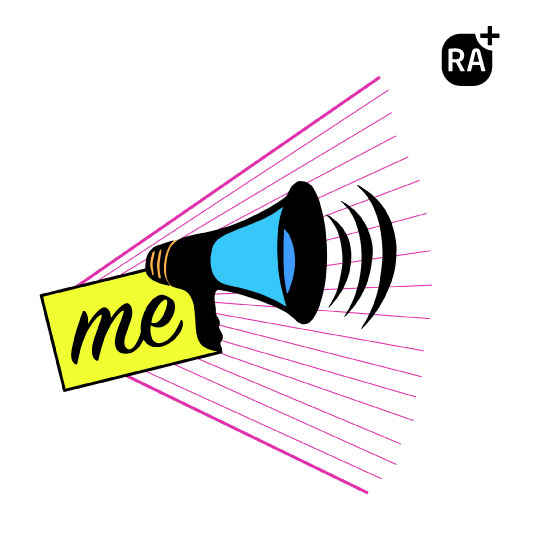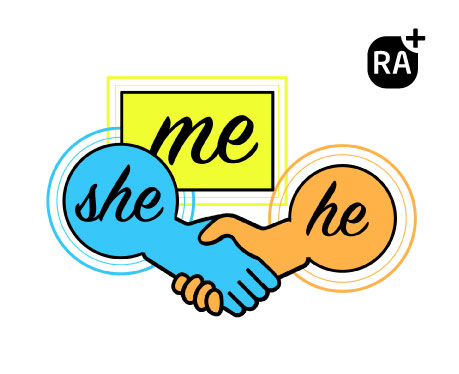1. Personal information
Objetives
- For students to learn vocabulary and expressions for greetings in entrepreneurial contexts.
- For students to learn vocabulary and grammatical expressions to basically introduce themselves in entrepreneurial contexts. despegarsube
- For students to learn essential vocabulary and grammar in order to ask and provide personal information in entrepreneurial contexts.
1.1. Greetings

Escanear con Camonapp
In entrepreneurial contexts, first impressions are extremely important. Most of the times, first impressions establish the success or failure of any potential business. Consequently, it is important to consider that to give a good first impression consists of greeting in the most appropriate way for a given context.
Then, most business situations take place in formal contexts among people who almost never know each other. Therefore, this unit will focus on the analysis and practice of the vocabulary and structures necessary to greet and introduce oneself in formal contexts such as those of business exchanges.

Figure 1 shows businesspeople shaking hands according to the context in which it takes place
1.1.1. Definition
To greet means opening a potential conversation with specific expressions. We also greet to put an end to our exchanges. Consequently, there are both welcome greetings and farewells depending on arrivals or departing exchanges. We can also classify greetings according to the formality of the exchange or register.

Figure 2 shows businesspeople from different countries greeting themselves according to their culture
1.1.2. Expressions
|
Greetings |
|||
|---|---|---|---|
|
Welcome |
Farewells |
||
| Informal | Formal | Informal | Formal |
| Hi / Hello | Good morning/afternoon/evening (depending on the moment of the day) | Bye / Bye bye | Good bye |
|
Follow up |
|||
|---|---|---|---|
| Informal | Formal | ||
| Opening | Answer | Opening | Answer |
| How do you do? | How do you do? | Nice to meet you. | Nice to meet you, too. |
| How are you? | Fine, and you? | Pleased to meet you. | Pleased to meet you, too. |
| Where are you from? | I’m from Poland. | Where are you from? | I’m from Ireland. |
| Are you English? | No, I’m Italian. | Are you British? | Yes, I am. |
| See you later. | See you. | Enjoy your stay | Thanks a lot. |
| Nice meeting you. | Nice meeting you, too. | Have a nice day. | Thank you. |
First, it is very important NOT to mix formal and informal expressions specially if you are in formal business contexts. Second, greetings are culturally bound. So, it depends on the cultural background of the person you are meeting with the way you will have to behave when greeting him/her. Consequently, it helps to know the local greeting custom to avoid giving offense. Finally, if the first impression is not good, there will not be another chance with that potential client. But, if it is a great first impression, the client is more likely to take the company seriously.

Figure 3 shows businesspeople looking at eachother in the eye
-
- Listen to the audios and read the scripts.
- Decide whether they are formal or informal greetings.
- Try to identify the place and participants (number and roles).
- Practice reading them in a loud voice.
Peter: Hello, Anne. How are you?
Anne: Fine, thanks. How are you?
Peter: I'm fine, thank you.
Peter: Goodbye, Janet. See you tomorrow!
Janet: Bye bye, Peter. Have a nice evening.
Peter: Thanks, the same to you!
Janet: Thanks, good bye.
Ms. Mont: Good afternoon. Welcome to Manchester Technologies Ltd.
Mr. Flint: Good afternoon. It’s a pleasure to be here.
Ms. Mont: Is this your first visit to our company?
Mr. Flint: Yes, it is. It’s a great place, I think.
Ms. Mont: Yes, you are right. Have a nice stay Mr. Flint.
Mr. Flint: Thank you. It’s been nice to meet you Ms. Mont.
Ms. Mont: Nice to meet you too. Good bye.
Mr. Flint: Good bye.
Read and listen to the following explanation about formal greetings provided by the BBC. BBC Learning English (2007). Available at:
https://downloads.bbc.co.uk/worldservice/learningenglish/howto/how_to_071219_greet_formal.pdf
1.2. Introductions
When introducing oneself in business contexts, it is important to speak clearly and
confidently. Don't rush or mumble. If it is a business introduction, one
should state one's name, your position and company.
Another good point to take into account is to smile and look the other
person in the eye for a couple of seconds. Maintaining eye contact during
introductions contributes to establish trust and mutual respect, and a
smile helps relaxation when meeting somebody for the first time.
When someone has just introduced himself or herself, the response
should be genuine, short, and simple. One should also repeat the person’s
name at the end of the greeting in order to show polite respect as well
as to help to remember the person’s name.N
1.2.1. Introducing oneself

Escanear con Camonapp
When businessmen attend an event with colleagues they meet for the first time, they frequently provide information about themselves. Personal information includes information about a person's job, marital status, address, phone number among others. It is important to provide a little more than the basic information about oneself when trying to establish business relationships because it creates a closer and more confident link between one and the other person.

Figure 4 shows a businesswoman stretching out her hand and looking into the other persons’ eyes
Do all these exercises related to "introductions":
https://inenglish.pe/e-learning/aula/socializing-introducing-yourself-exercises.htm
1.2.2. Giving personal information
Paula: What's your first name?
Maria: It’s Maria.
Paula: Where are you from?
Maria: I’m from Atlanta, Georgia.
Paula: What's your job?
Maria: I'm a teacher.
Paula: What's your address?
Maria: It’s 34 White Street.
Paula: What is your phone number?
Maria: It’s 308-6730.
Paula: How old are you?
Maria: I’m 54.
Paula: Are you married (single/divorced)?
Maria: Yes, I am./No I’m not.
Here is a video related to introducing oneself.
1.2.3. Introducing other people

Escanear con Camonapp
It is important to introduce the people who accompany you whenever you encounter colleagues or business partners at work or job meetings. When introducing another person, similar information to that provided when introducing oneself is provided. That is to say, you provide the name, position in the company and, sometimes, the relationship with you.

Figure 5 shows one businesswoman introducing her business to another businesswoman
-
Glenn: Pam, I'd like you to meet Debbie.
Pam: Hello Debbie how are you?
Debbie: I am fine thank you, how are you?
Glenn: Debbie has just started working for us. -
Glenn: Hello, Pam. This is Debbie from the Australian office.
Pam: Hello Debbie how are you?
Debbie: I am fine thank you, how are you?
Pam: I’m fine. It’s nice to meet you Debbie.
Debbie: It’s nice to meet you too, Pam.
Here is a video related to introducing other people.
The etiquette, or social rules, behind introductions can vary between contexts and purpose. Introducing one person to another can be a simple gesture, but at parties or business functions it is especially important to follow proper etiquette.
First, keep an introduction simple and basic while providing the necessary information. Using good body language is key.
Make eye contact and look directly at the person you are speaking to. Then turn toward the person who will be introduced. Speak clearly and in a pleasant tone. Offer proper titles and names. Remember proper titles such Dr. or Rev. when appropriate.
Offer a conversation starter to include the new person. If possible, use a neutral topic that both parties are familiar with. Weather, a shared interest or a compliment is a good way to start a friendly discussion. Avoid religious, political or cultural issues.
Source: https://www.ehow.com/how_8499486_etiquette-introduce-people.html
- Practise this topic solving the following exercises at:
https://inenglish.pe/e-learning/aula/socializing-introducing-yourself-exercises.htm
-
- Listen to the audios and read the scripts.
- Decide whether they are formal or informal introductions.
- Try to identify the place and participants (number and roles).
- Practice reading them in a loud voice.
John: Hello, my name is John. What is your name?
Jane: Hi, John. My name is Jane. Pleased to meet you.
John: Pleased to meet you too, Jane.
Jane: Where are you from, John?
John: I’m from New Zealand. And you?
Jane: I’m from Mexico.
John: What’s your job in this company?
Jane: I’m the CEO’s secretary. And, what do you do John?
John: I’m a new accountant. Are you married Jane?
Jane: Yes, I’m married. And, you?
John: I am single. Sorry but, how old are you?
Jane: I’m 35. How old are you, John?
John: I’m 35, too. What a coincidence!
Watch the following video to review previously seen topics
1.3. Present simple of verb to be
The present simple of verb "to be" is used to provide information about oneself such as name, age, nationality, occupation, among others. This verb and tense are also used to describe people appearance, personality, mood, state of health.
1.3.1. Systematization
|
To be: Affirmative, Interrogative and Negative |
||
|---|---|---|
|
Affirmative |
Interrogative |
Negative |
| I am...* | Am I...? | I´m not... |
| You are... | Are you...? | You aren´t... |
| He is... | Is he...? | He isn´t... |
| She is... | Is she...? | She isn´t... |
| It is... | Is it...? | It isn´t... |
| We are... | Are we...? | We aren´t... |
| You are... | Are you...? | You aren´t... |
| They are... | Are they...? | They aren´t... |
* Note: "..." = information about someone or something
1.4. Personal pronouns
Personal pronouns are words used to refer to nouns or noun phrases. Personal pronouns replace nouns. Take a look at these examples:
- Sara works at IBM. She is a receptionist there.
- IBM is a great company. It is a nice place to work.
In the first example, "she" is the same as "Sara" and in the second sentence “it” is the same as “IBM”.
It is necessary to distinguish between personal pronouns and possessive adjectives which modify nouns by indicating who or what those nouns belong or relate to.
|
Personal pronouns |
Possessive adjectives |
|---|---|
| I | My |
| You | Your |
| He | His |
| She | Her |
| It | Its |
| We | Our |
| You | Your |
| They | Their |
1.4.1. Expressions
- My name is Julia. I am a CEO at TEXAS Instruments.
- Are you the new employee? What’s your name?
- The new boss is here. He is from Boston. His office is ready.
- The secretary is Julia. She is Argentinean. Her accent is very good.
- Arcor is an Argentinean company. It is one of the best in the country. Its headquarters are in Buenos Aires province.
- We are in charge of Human Resources. Our department is really big.
- The staff in this company is very efficient. They are about 100 people. Their representatives are in the headquarters.
- Practise this topic solving the following exercises at:
https://www.esl-lounge.com/student/grammar/1g6-pronoun-or-adjective.php
1.5. Spelling
To spell means saying the letters which form any word in the order of appearance along the word. For example, to spell “cat” you would say “C-A-T”.
1.5.1. The alphabet
To know the alphabet will help you spell those words other people do not understand when you speak to them, especially in introductions when it is relevant to spell your surname, address or e-mail.
|
/ei/ |
/i/ |
/e/ |
/ai/ |
/ou/ |
/iu/ |
/a/ |
|---|---|---|---|---|---|---|
| a,h,j | b,c,d,e,g,p,t,v,z | f,l,m,n,s,x,z | i,y | o | q,u,w | r |
Watch these videos with the sounds of letters and words:
1.5.2. Expressions
Receptionist: Please tell me your name?
Customer: My name is Boris Jones.
Receptionist: I am sorry I don't understand. Please can you repeat it?
Customer: B O R I S - J O N E S
**Hint if you still don't understand what they are saying ask them to spell it **
Receptionist: I’m sorry I still don't understand, please spell it for me
Customer: /bi - ou - ar - ai – es/ / jei - ou - en - i – es/
Receptionist: Oh, Boris Jones. Thank you.
A longer conversation
A: Can you tell me your full name please?
B: My full name is John Pilkington
A: I'm sorry, what was your last name again?
B: My last name is Pilkington.
A: I’m sorry, I don't understand. Could you please repeat it more slowly for me?
B: P - i - l - k - i - n - g - t - o - n.
A: How do you write that? Could you spell it please?
B: P - i - l - k - i - n - g - t - o - n.
A: And could you tell me your first name please?
B: It’s John
A: Pardon? John - J-o-h-n.
B: Thank you John for your time. You're welcome, I hope to hear from you soon.
Watch this video about spelling
- Practise this topic solving the following exercises at:
1.6. Numbers
Numbers are every important in many aspects of life. Specially in business contexts. But when introducing oneself, numbers are used to express one's age, amount of years working at a company, etc.
| 1 one | 11 eleven | 21 twenty-one | 31 thirty-one |
| 2 two | 12 twelve | 22 twenty-two | 40 forty |
| 3 three | 13 thirteen | 23 twenty-three | 50 fifty |
| 4 four | 14 fourteen | 24 twenty-four | 60 sixty |
| 5 five | 15 fifteen | 25 twenty-five | 70 seventy |
| 6 six | 16 sixteen | 26 twenty-six | 80 eighty |
| 7 seven | 17 seventeen | 27 twenty-seven | 90 ninety |
| 8 eight | 18 eighteen | 28 twenty-eight | 100 a/one hundred |
| 9 nine | 19 nineteen | 29 twenty-nine | 1,000 a/one thousand |
| 10 ten | 20 twenty | 30 thirty | 1,000,000 a/one million |
Separation between Hundreds and Tens
Hundreds and tens are usually separated by 'and' (in American English 'and' is not necessary).
Examples:
110 - one hundred and ten
1,250 - one thousand, two hundred and fifty
2,001 - two thousand and one
Hundreds
Use 100 always with 'a' or 'one'.
100 - a hundred / one hundred
'a' can only stand at the beginning of a number.
100 - a hundred / one hundred
2,100 - two thousand, one hundred
Thousands and Millions
Use 1,000 and 1,000,000 always with 'a' or 'one'.
1,000 - a thousand / one thousand
201,000 - two hundred and one thousand
Use commas as a separator.
57,458,302
The Number 1,000,000,000
In English this number is a billion. This is very tricky for nations where 'a billion' has 12 zeros. 1,000,000,000,000 in English, however, is a trillion.
These numbers are even a bit problematic for native speakers: for a long time the British 'billion' had 12 zeros (a number with 9 zeros was called 'a thousand million'). Now, however, also in British English 'a billion' has 9 zeros.
- two hundred Euros
- several thousand light years
- hundreds of Euros
- thousands of light years
Singular or Plural?
Numbers are usually written in singular.
Example:
The plural is only used with dozen, hundred, thousand, million, billion, if they are not modified by another number or expression (e.g. a few / several).
Example:
- Do all these exercises related to numbers:
1.7. Countries, nationalities, occupations and jobs
Countries are named with proper nouns and are written with capital letter at the beginning of the name. Nationalities are adjectives which refer to belonging to a specific country.
Occupations are those activities that are carried out regularly, on a daily basis. Jobs refer to those activities people carry out to earn their living or to afford it.
1.7.1. Countries, nationalities
The following table includes some countries, nationalities and the persons (noun) belonging to them.
|
Country |
Nationality |
Person |
|---|---|---|
| Argentina | Argentinian | an Argentinian |
| Australia | Australian | an Australian |
| Belgium | Belgian | a Belgian |
| Bolivia | Bolivian | a Bolivian |
| Brazil | Brazilian | a Brazilian |
| Bulgaria | Bulgarian | a Bulgarian |
| Chile | Chilean | a Chilean |
| China | Chinese | a Chinese |
| Egypt | Egyptian | an Egyptian |
| England | English | an Englishman, an Englishwoman |
| Germany | German | a German |
| Greece | Greek | a Greek |
| Hungary | Hungarian | a Hungarian |
| Iran | Iranian | a Iranian |
| Iraq | Iraqi | a Iraqi |
| Ireland, Republic of | Irish | an Irishman, an Irishwoman |
| Italy | Italian | an Italian |
| Jamaica | Jamaican | a Jamaican |
| Japan | Japanese | a Japanese |
| Mexico | Mexican | a Mexican |
| Paraguay | Paraguayan | a Paraguayan |
| Peru | Peruvian | a Peruvian |
| Poland | Polish | a Pole |
| Portugal | Portuguese | a Portuguese |
| Russia | Russian | a Russian |
| Scotland | Scottish | a Scot |
| Spain | Spanish | a Spaniard |
| Sweden | Swedish | a Swede |
| Syria | Syrian | a Syrian |
| Thailand | Thai | a Thai |
| Turkey | Turkish | a Turk |
| Uruguay | Uruguayan | a Uruguayan |
| Wales | Welsh | a Welshman, a Welshwoman |
- Study all countries, nationalities and people at:
https://www.englishclub.com/vocabulary/world-countries-nationality.htm
1.7.2. Occupations and jobs
The following list includes the most common occupations and jobs.
| accountant | contador |
| air hostess | azafata |
| architect | arquitecto |
| bank clerk | empleado bancario |
| bookseller | librero |
| bricklayer | albañil |
| bus driver | conductor de autobús |
| butcher | carnicero |
| chemist | farmacéutico |
| consultant | asesor |
| cook | cocinero |
| customs officer | oficial de aduanas |
| dentist | dentista |
| doctor | médico |
| driver | conductor |
| electrician | electricista |
| employee | ingeniero |
| journalist | periodista |
| judge | juez |
| lawyer | abogado |
| librarian | bibliotecario |
| office worker | oficinista |
| painter | pintor |
| photographer | fotógrafo |
| pilot | piloto |
| plumber | fontanero, plomero |
| receptionist | recepcionista |
| reporter | reportero |
| salesman | vendedor |
| secretary | secretario |
| security guard | guardia de seguridad |
| stockbroker | agente de bolsa |
| student | estudiante |
| surgeon | cirujano |
| teacher | profesor, maestro |
| tourist guide | guía turística |
| translator | traductor |
| writer | escritor |
- Do all these exercises related to jobs and occupations:
https://www.agendaweb.org/vocabulary/people_jobs_personalities-exercises.html
Watch these videos to review the whole unit.
Watch this video to go further in this lesson
Watch these videos to review the whole unit.

